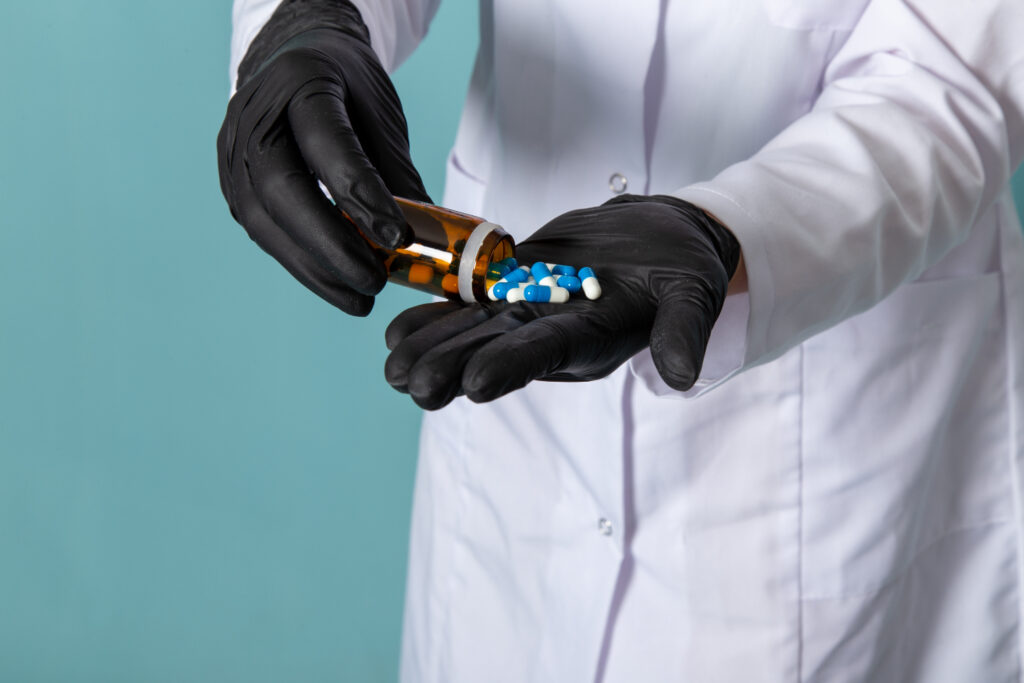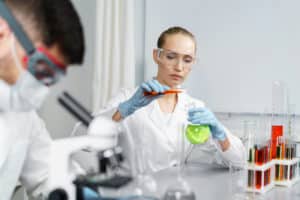The Science Blog

How to Develop Future Antibiotics and Combat Superbugs
Understanding and Combating Antibiotic Resistance
Antibiotic resistance is a rising global health issue. It could make everyday infections hard to treat. Bacteria are getting better at fighting our antibiotics. This is causing superbugs to appear. Superbugs are germs that can resist many drug treatments. The World Health Organization (WHO) warns that antibiotic resistance is one of the top ten public health threats globally. If left unchecked, it could result in millions of deaths and massive economic costs by 2050.
Scientists and researchers are creating next-generation antibiotics. They use advanced chemistry, microbiology, and biotechnology to prevent this future. This guide will help you understand antibiotic resistance. You’ll also learn how future antibiotics could defeat superbugs.
Why Antibiotic Resistance Matters
Antibiotic resistance happens when bacteria change to survive antibiotics. This makes treatments ineffective. This resistance primarily arises due to:
- Overuse and misuse of antibiotics in humans and animals
- Poor infection control in healthcare settings
- The widespread use of antibiotics in agriculture and food production
- Slow development of new antibiotic classes
Superbugs like MRSA and MDR-TB are big threats now. These bacteria cause infections that are hard to treat. Sometimes, they are impossible to treat with the drugs we have now. Antibiotic-resistant infections are a huge economic problem. They could cost the global economy trillions of dollars if we don’t act.
Quick Guide: Developing Future Antibiotics and Combating Superbugs
- Antibiotic resistance is a growing threat, making infections harder to treat.
- The future of antibiotics relies on new drug classes, advanced delivery systems, alternative therapies, and AI-driven discovery to combat resistant superbugs and protect public health.

Step-by-Step Guide: How to Develop Future Antibiotics
Step 1: Understand the Mechanisms of Antibiotic Resistance
To design effective new antibiotics, scientists must first understand how bacteria become resistant. The key mechanisms include:
1. Genetic Mutations: Bacteria have random genetic mutations. These changes alter their drug targets, which makes antibiotics less effective. Mutations can happen naturally or be caused by things like antibiotic exposure.
2. Horizontal Gene Transfer: Bacteria share resistance genes. They do this through conjugation, transformation, and transduction. This allows resistance to spread quickly among different bacterial species.
3. Efflux Pumps: Some bacteria have efflux pumps. These pumps push antibiotics out of their cells. This lowers drug levels and makes them less effective.
4. Biofilm Formation: Bacteria can create biofilms. These are protective layers that help shield them from antibiotics and the immune system. These biofilms contribute to persistent infections.
Step 2: Discover New Antibiotic Classes
Many antibiotics attack the same bacterial pathways. Because of this, bacteria have become resistant to them over time. To combat this, researchers are exploring:
- Novel Chemical Structures: Scientists are exploring new molecules. They target bacterial mechanisms in unique ways.
- Natural Product-Based Antibiotics: Many come from natural sources like fungi and soil bacteria. Identifying new natural compounds could lead to powerful new drugs.
- Antibiotic Combinations: Using several antibiotics at once can help fight resistance. This approach attacks bacteria in different ways.
Step 3: Develop Advanced Drug Delivery Systems
New drug delivery methods can improve the efficiency and effectiveness of antibiotics. Some innovative approaches include:
- Nanoparticles and Liposomes: They are tiny carriers. They can boost drug stability, target infections more accurately, and lower side effects.
- Prodrug Strategies: Prodrugs are inactive until they enter the body. This makes them more effective.
- Smart Drug Delivery: AI helps create drug formulations that release antibiotics right where infections happen. This means less harm to good bacteria.
Step 4: Explore Alternative Therapies
Researchers face challenges with traditional antibiotics, so they are exploring alternative treatments, like:
- Bacteriophage Therapy: – Viruses called bacteriophages infect and kill bacteria. This therapy has been successfully used to treat antibiotic-resistant infections.
- Antimicrobial Peptides (AMPs): They are natural proteins. They can break down bacterial membranes and stop infections.
- CRISPR-Based Antibiotic Strategies: CRISPR-Cas9 is a gene-editing tool. It can target and disable antibiotic-resistant genes in bacteria.
Step 5: Use AI and Machine Learning in Antibiotic Discovery
AI is revolutionising drug discovery by:
- Analysing large datasets to identify potential antibiotic candidates
- Predicting how new compounds will interact with bacterial cells
- Reducing the time and cost required to develop new antibiotics
In 2020, AI found a strong new antibiotic called halicin. It worked well against many resistant bacteria. Machine learning models continue to accelerate the discovery of promising new compounds.
Pro Tip: Encourage responsible antibiotic use—only take antibiotics when prescribed and complete the full course to avoid contributing to resistance.
Best Practices for Antibiotic Use and Research
What Can Scientists and Policymakers Do?
- Encourage Responsible Antibiotic Use – Avoid unnecessary prescriptions and promote proper use of antibiotics.
- Invest in Antibiotic Research – Governments and pharmaceutical companies must prioritise antibiotic development.
- Implement Strong Infection Control Measures – Good hygiene and sanitation help stop resistant bacteria from spreading.
- Improve Surveillance Programs – Tracking resistance patterns can help guide treatment strategies.
What Can Individuals Do?
- Follow Prescriptions Properly – Complete the full course of antibiotics as directed by a doctor.
- Avoid Self-Medication – Do not take antibiotics without a prescription.
- Maintain Good Hygiene – Handwashing and food safety practices help reduce infections.
- Support Policy Changes – Push for rules that cut down on antibiotic overuse in food production and healthcare.
Important: Combating antibiotic resistance requires a global, collaborative effort. Policymakers, researchers, and individuals must act now to ensure effective antibiotics for future generations.
Frequently Asked Questions (FAQ)
Why aren’t pharmaceutical companies developing more antibiotics?
Creating new antibiotics costs a lot and takes time. Drug companies have few financial reasons to invest in them. Governments and private organisations are working on financial models to encourage antibiotic research.
Can alternative therapies completely replace antibiotics?
Antibiotics remain essential for treating infections, even though therapies like bacteriophage therapy and antimicrobial peptides look promising. Future medicine will likely combine different approaches.
How can AI help fight antibiotic resistance?
AI helps find new antibiotics faster, predicts how bacteria will react and improves treatment plans. It helps researchers identify novel drug candidates in a fraction of the time required for traditional methods.
How can I help reduce antibiotic resistance?
Take antibiotics only if a doctor prescribes them. Finish the entire treatment course. Keep good hygiene. Support rules that encourage responsible antibiotic use.

The Future of Antibiotics – A Collective Responsibility
Antibiotic resistance is a big challenge in medicine today, but new science brings hope. Developing new antibiotics and alternative treatments requires a collaborative global effort. Everyone—governments, researchers, healthcare providers, and individuals—need to act. We must work together to keep antibiotics effective for future generations.
We can fight superbugs by understanding resistance, investing in research, and using antibiotics wisely. The question is not whether we can beat antibiotic resistance—but how fast we can act before it’s too late.
Are you ready to join the fight against superbugs? Share your thoughts in the comments!









